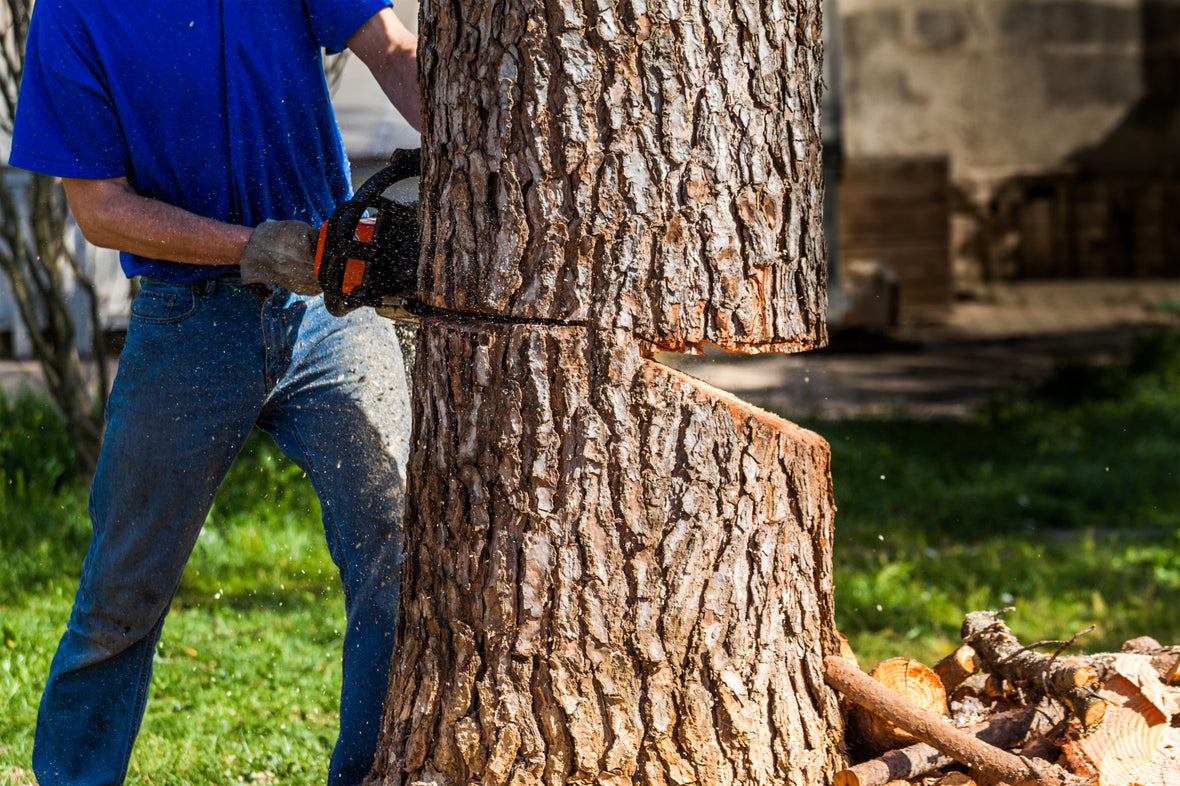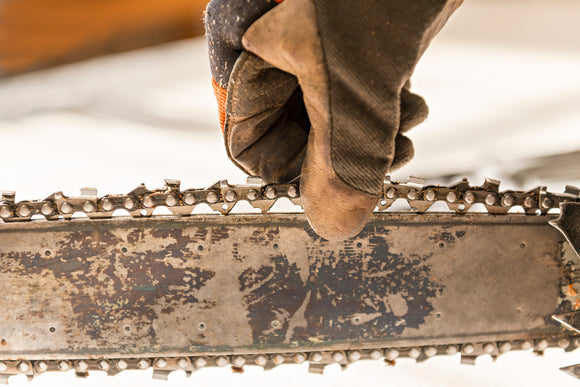
Beginners Guide For Chainsaws
5 easy chainsaw cuts that every beginner should know
Basic Cuts That Will Get The Job Done
In this blog, we'll cover some basic beginner cuts on a chainsaw that will help you get started with using this powerful tool safely and effectively. But as with any tool, using a chainsaw requires some knowledge and experience.
1. Crosscut
The first beginner cut that we'll cover is the crosscut. This cut involves cutting across the grain of the wood, which is typically the easiest and safest way to cut wood with a chainsaw. To perform a crosscut, hold the saw at a 90-degree angle to the wood and begin cutting through the wood. Be sure to keep your body to the side of the saw and away from the cut, and use a firm grip on the saw to maintain control.

2. Rip Cut
A rip cut is a cut that runs along the grain of the wood, and is typically used to cut logs or larger pieces of wood into smaller sections. To perform a rip cut, hold the saw at a slight angle to the wood and begin cutting through the wood, keeping the saw aligned with the direction of the grain. As with the crosscut, be sure to keep your body to the side of the saw and use a firm grip to maintain control.

3. Notching
Notching is a technique used to create a starting point for a crosscut or rip cut, or to make a precise cut in a specific location on a piece of wood. To notch a piece of wood, hold the saw at a 45-degree angle to the wood and make a small cut into the wood at the location where you want to make your cut. Then, hold the saw at a 90-degree angle to the wood and make your crosscut or rip cut from the notched starting point.

4. Limbing
Limbing is the process of removing branches from a tree trunk or other piece of wood. To limb a piece of wood, hold the saw at a 90-degree angle to the branch and make a cut through the branch from the underside. Then, move to the top of the branch and make a second cut through the branch to remove it completely. Be sure to use caution when limbing, as branches can be unstable and may fall unexpectedly.
5. Bucking
Bucking is the process of cutting logs or other large pieces of wood into smaller, more manageable sections. To buck a log, hold the saw at a slight angle to the log and make a cut through the log, moving the saw back and forth to create a groove. Once you have created a groove, hold the saw at a 90-degree angle to the log and complete your cut to create a section of wood that can be easily moved or further processed.
These basic beginner cuts on a chainsaw will help you get started with using this powerful tool safely and effectively. Always use caution when using a chainsaw, wear appropriate safety gear, and never attempt cuts that are beyond your skill level. With practice and experience, you'll be able to tackle more advanced cuts and make quick work of any woodcutting task.


